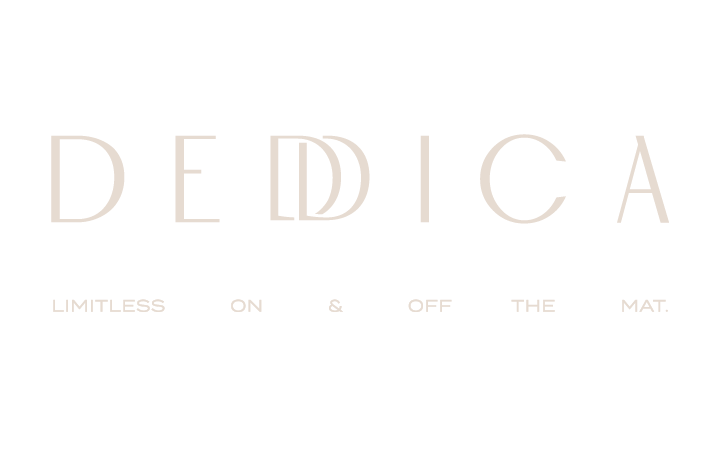The Core - the unsung hero of your practice
We all know that yoga helps with flexibility and balance, but did you know that your core is silently doing most of the work? Spoiler: it's not just about rocking a handstand or powering through Plank Pose.
A strong core stabilizes your entire body, helps prevent injuries, and even improves your breathing.
The best part? Strengthening your core doesn’t mean endless crunches—it’s woven into almost every yoga pose (whether you realize it or not).
The Science of Core Engagement: More Than Just Abs
What the Core Really Is:
When we talk about the core, most people immediately think of the abdominals, but in yoga, the core is a lot more than that. It includes not only your abs but also the muscles along your back, around your pelvis, and even your diaphragm. This entire network of muscles works together to stabilize your spine and keep you balanced in every yoga pose.
Why It Matters:
In yoga, a strong core provides the foundation for almost everything. From balancing in Warrior III (Virabhadrasana III)to maintaining proper alignment in Downward Dog (Adho Mukha Svanasana), your core muscles are constantly working to keep you upright and stable.
How It Transforms Your Practice:
A strong core helps you hold poses longer, move through transitions more smoothly, and even improve your breathing. Plus, core strength reduces your risk of injury by protecting your lower back and stabilizing your pelvis.
How Your Core Keeps You From Face-Planting (And Other Perks)
The Face-Plant Factor:
Ever tried to float into a handstand or balance in Crow Pose only to end up gracelessly kissing the floor? Don’t worry, it happens to the best of us. What’s often missing in these moments is proper core engagement. When your core is engaged, it acts like a safety net, helping you balance and prevent those dreaded face-plants.
The Sneaky Core Workout:
Here’s the thing: in yoga, your core is engaged even when you don’t realize it. Holding Plank Pose or transitioning from Chaturanga to Upward Facing Dog? That’s all core. And let’s not even talk about Boat Pose (Navasana)—the poster child for sneaky core work that makes you question your life choices.
Getting upside down in inversions isn’t about perfect alignment but building the physical endurance and core strength to support you. This means your core isn’t just about aesthetics—it’s about survival!
How It Transforms Your Practice:
With consistent core engagement, you'll notice improvements in your balance, transitions, and even breathing. A strong core stabilizes your movements, meaning fewer wobbles, less strain, and more control in tricky postures.
Core Strength and Breathing: The Surprising Connection
The Breath-Body Link:
Your diaphragm is part of your core, which means that how you breathe affects your core strength and vice versa. When you practice deep, mindful breathing (pranayama), you’re not just calming your mind—you’re also engaging your core. Every time you exhale deeply, your transverse abdominis (the deepest layer of abdominal muscles) contracts, giving your spine added support.
Breath and core work together to create stability and openness in the body, even in poses that seem unrelated to core strength.
Why It Matters:
By focusing on breath in your practice, you automatically engage your core. It’s like a two-for-one deal: you improve your pranayama while also strengthening your body’s foundation.
How It Transforms Your Practice:
Incorporating deep, controlled breathing into your yoga flow helps you activate your core without thinking about it. This not only improves your poses but also enhances your stamina—because when you’re breathing deeply, you’re giving your body the oxygen it needs to keep going.
Why Core Engagement Isn’t Just for Balancing Poses
The Non-Balancing Benefits:
You might think core strength is only important for balance poses like Tree Pose (Vrksasana) or Handstand, but it’s actually critical in almost every posture. Whether you're in Warrior II (Virabhadrasana II) or Child's Pose (Balasana), your core is silently supporting you.
By focusing on core engagement even in poses that don’t traditionally “feel” like core work, you create a stronger, more aligned body that can move efficiently through transitions, hold poses longer, and avoid injury.
How to Strengthen Your Core Without Feeling Like You’re in Bootcamp
Fun Fact: You’re Probably Already Doing It
Here’s the good news: if you’re practicing yoga regularly, you’re already working your core—often without realizing it. Poses like Downward Dog, Plank, and even Mountain Pose (Tadasana) engage your core muscles in subtle yet powerful ways. So, if the idea of core work makes you cringe, don’t worry—you're already doing it!
How It Transforms Your Practice:
When you work on strengthening your core through accessible poses and transitions, you build up the endurance to hold poses longer, move with greater control, and reduce the risk of injury. Plus, let’s be honest—your balance improves, and those accidental face-plants become a thing of the past.
Your core is more than just a set of muscles—it’s the foundation of your yoga practice. By understanding how core engagement affects everything from balance to breath, you can unlock new levels of strength, stability, and ease on the mat.
So, next time you find yourself in a challenging pose, remember that your core is your secret weapon.
And the best part?
You’ve probably been working it all along without even realizing it.
You don't have to get ready if you stay ready
